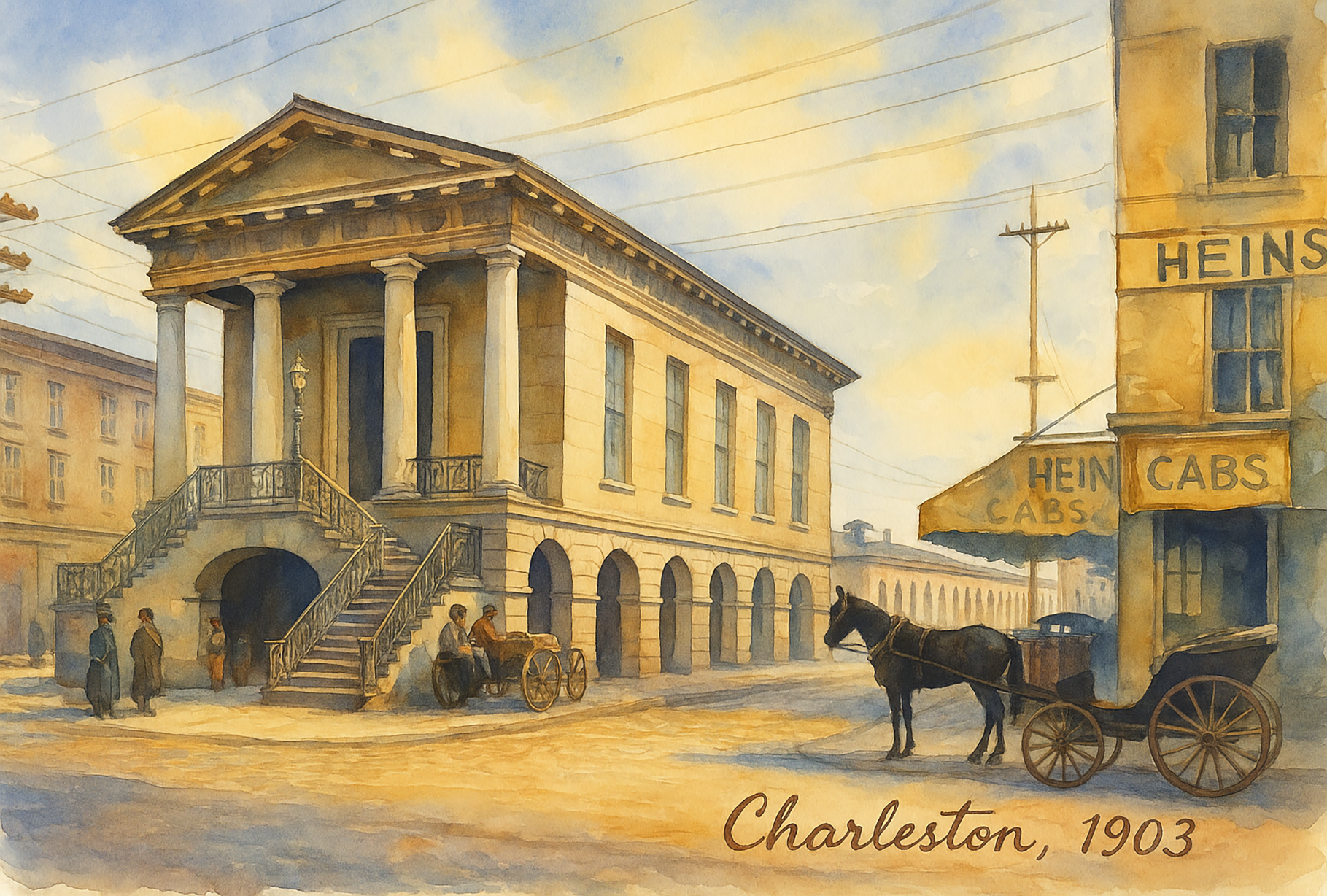Made with high quality Tin sign , size 8×12 in. with 4 predrilled small holes on the corns
Chartered: In 1788, when Charles Cotesworth Pinckney deeded land to the City of Charleston to be used as a public market forever.
Purpose: To provide a central location for selling meat, produce, and later crafts.
Market Sheds: Built between 1804–1830, stretching several blocks from Market Hall (at Meeting Street) eastward toward the Cooper River.
Market Hall: Completed in 1841 in Greek Revival style (designed by Edward Brickell White). Served as the grand entrance to the sheds.
Civil War Era: The market continued to function during the war, and the sheds were used by the Confederacy for supplies.
Continued as a produce and meat market, but gradually evolved into a place for crafts, souvenirs, and local products.
Became known for Sweetgrass basket weavers, continuing a Gullah-Geechee tradition dating back to West Africa and the rice plantations of the Lowcountry.
The Charleston City Market covers four city blocks and is one of the oldest public markets in the U.S. still in operation.
Market Hall is a National Historic Landmark.
The sheds are home to hundreds of vendors (art, food, crafts, souvenirs), and the market is one of Charleston’s most visited attractions.
Made with high quality Tin sign , size 8×12 in. with 4 predrilled small holes on the corns
Chartered: In 1788, when Charles Cotesworth Pinckney deeded land to the City of Charleston to be used as a public market forever.
Purpose: To provide a central location for selling meat, produce, and later crafts.
Market Sheds: Built between 1804–1830, stretching several blocks from Market Hall (at Meeting Street) eastward toward the Cooper River.
Market Hall: Completed in 1841 in Greek Revival style (designed by Edward Brickell White). Served as the grand entrance to the sheds.
Civil War Era: The market continued to function during the war, and the sheds were used by the Confederacy for supplies.
Continued as a produce and meat market, but gradually evolved into a place for crafts, souvenirs, and local products.
Became known for Sweetgrass basket weavers, continuing a Gullah-Geechee tradition dating back to West Africa and the rice plantations of the Lowcountry.
The Charleston City Market covers four city blocks and is one of the oldest public markets in the U.S. still in operation.
Market Hall is a National Historic Landmark.
The sheds are home to hundreds of vendors (art, food, crafts, souvenirs), and the market is one of Charleston’s most visited attractions.
